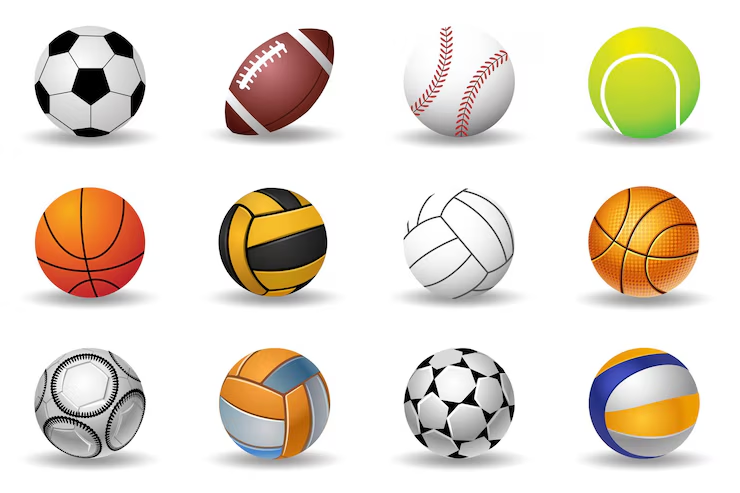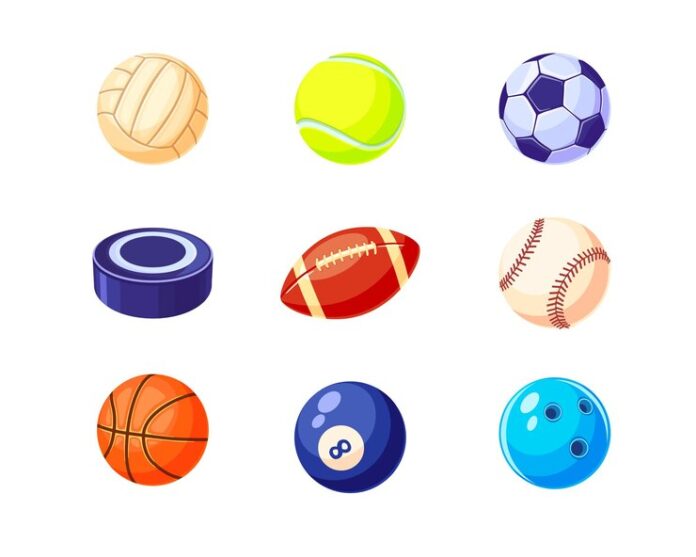When you think of sports, the image of a sports ball often comes to mind. They are at the heart of many games, from football to tennis, and hold a unique place in our athletic lives. But these simple objects are more than just equipment; they are pivotal in defining the dynamics and enjoyment of sports.
The Evolution of Sports Balls
Sports balls have come a long way since their humble beginnings. Initially crafted from natural materials like animal bladders, these pioneers of the sporting world were a far cry from today’s meticulously engineered creations. The transformation of sports balls over centuries reflects not only advancements in technology but also changes in the sports themselves, evolving to meet the needs of more competitive and skilled players.
Today, modern sports balls boast high-tech designs and materials. From aerodynamics to bounce consistency, everything is optimized for maximum performance. This evolution is more than just a technological feat; it’s a testament to how seriously we take our games and how important have become in our culture.
Types of Sports Balls
There’s a fascinating diversity among sports balls, each crafted for specific games, and their differences are more than just size or color. For example, soccer balls are designed with panels to ensure flight stability, while basketballs require a specific weight and grip for optimal dribbling and shooting. These variations in design and construction highlight the intricate relationship between their respective balls. Understanding these differences is crucial for players seeking to improve their skills or simply enjoy the sport to its fullest.
The Science Behind Sports Balls

The magic of sports balls lies in the science of their design and movement Engineers use principles like trajectory, velocity, and elasticity to create balls that enhance performance and maximize player ability.
For instance, the bounce of a basketball is a delicate balance of internal pressure and surface material. Similarly, a football’s flight path is influenced by its shape and the way air flows over it. By understanding these scientific principles, manufacturers can craft that help athletes push the limits of their performance, making each game a testament to human ingenuity and passion for sports.
Choosing the Right Sports Ball
Selecting the right sports ball is essential for both enjoyment and performance. Different games require different ball characteristics, and choosing the wrong one can affect gameplay significantly. For players, coaches, and parents, knowing what to look for in a sports ball can make a world of difference.
Consider factors like material and size when selecting a ball. For younger players, softer balls might be more appropriate, while more advanced athletes may benefit from professional-grade equipment. Additionally, maintaining your sports balls properly ensures longevity and consistent performance, crucial for anyone serious about their sport.
Future Trends in Sports Balls
The future of sports balls is exciting and full of potential. With rapid advancements in technology, the possibilities are endless. Innovations such as smart balls with sensors that track performance data, or eco-friendly materials that reduce environmental impact, are already making waves in the industry.
Manufacturers are constantly exploring new materials and designs to enhance durability, performance, and sustainability. As we look to the future, it’s clear that will continue to evolve, driven by the demands of athletes and the ever-changing landscape of sports.
Conclusion
Sports balls are much more than just tools for gameplay. They are central to the sports experience, influencing how games are played and enjoyed around the world. From their rich history to the cutting-edge technology shaping their future, sports balls stand as a symbol of human achievement in athletics.
